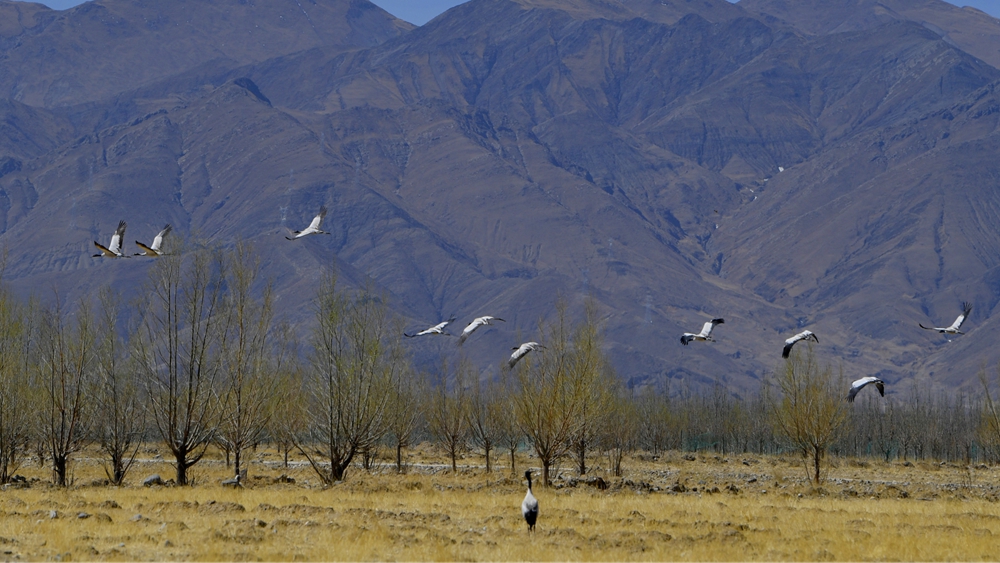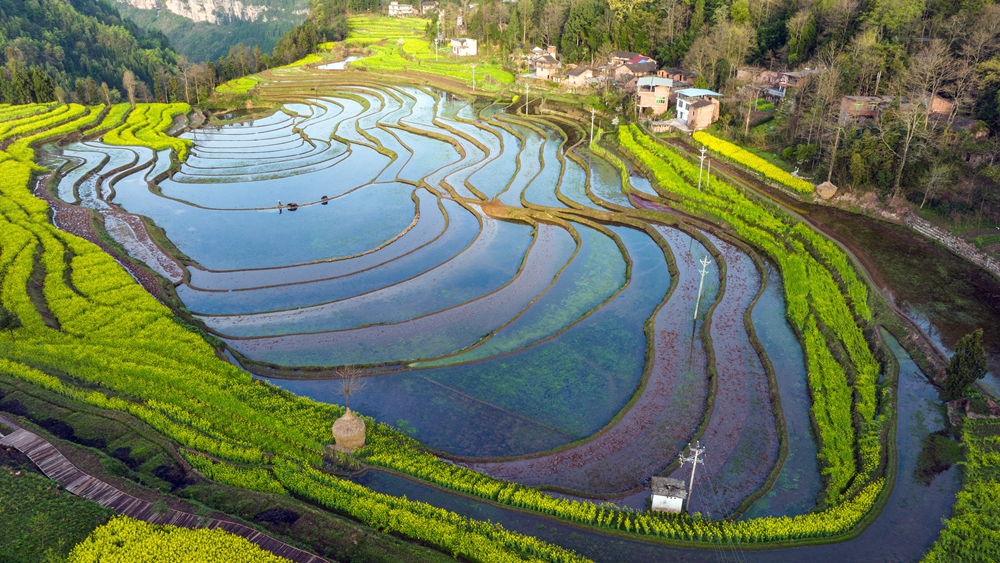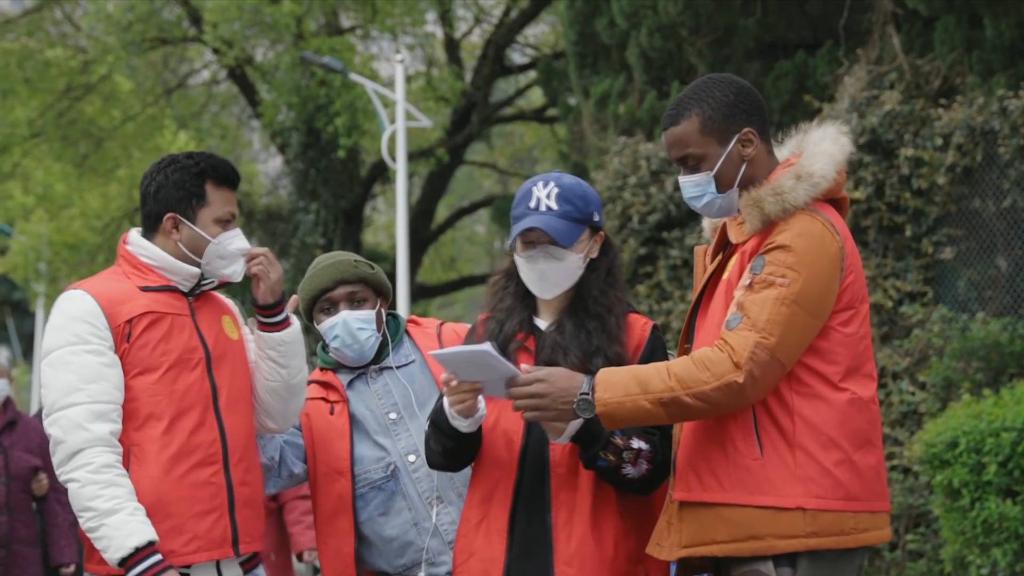
A snow leopard gazes at a lake at the source of the Yellow River in northwest China's Qinghai, Oct. 5, 2019. (World Wide Fund for Nature/Handout via Xinhua)
XINING, April 2 (Xinhua) -- Researchers have identified a key factor that facilitates the coexistence of humans and large predators in the wild, based on a study of snow leopards living in the Sanjiangyuan (Three-River-Source) area of the Qinghai-Tibet Plateau in China.
The findings were presented in an article titled "Spatial separation of prey from livestock facilitates coexistence of a specialized large carnivore with human land use," published in the journal Animal Conservation in late March.
The Chinese and international team of scientists studied snow leopards to understand how a large carnivore and its primary prey -- in this case the sheep-like bharal -- could coexist with human land-use activities taking place in a large proportion of its range. The study focused on snow leopards in the headwaters of the three rivers of Yangtze, Yellow and Lancang, in northwest China's Qinghai Province.
Using a combination of livestock census, camera trapping and wildlife surveys across a broad gradient of livestock grazing intensity in a 363,000-square-km landscape on the Qinghai-Tibet Plateau, the scientists found no evidence of livestock grazing impacts on snow leopard habitat use, bharal density and spatial distribution, even though livestock density was 13 times higher than bharal density, said the paper's abstract.
The key to coexistence between species is the existence of "niche" habitats with different characteristics, allowing predators to hunt their prey without impacting on livestock and human activities.
"The cliffs and the vicinity of rugged rocks are important habitats for snow leopards and bharal, but these areas with lower grass forage conditions are not preferred by livestock, which protects the two species' health," said Xiao Lingyun, one of the authors of the paper, also associate professor with Xi'an Jiaotong-Liverpool University.
Wildlife protection in Sanjiangyuan has been increasingly prioritized in recent years, and the Sanjiangyuan National Park was officially designated in October 2021. At an average altitude of more than 4,700 meters, it is the world's highest national park covering a total area of 190,700 square km. ■












